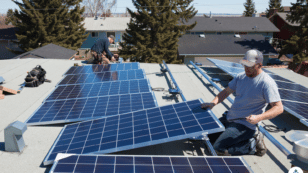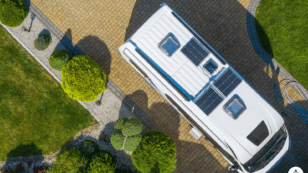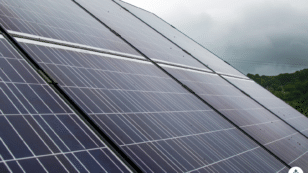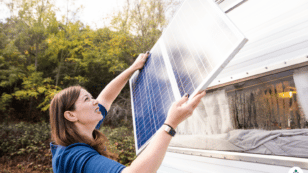
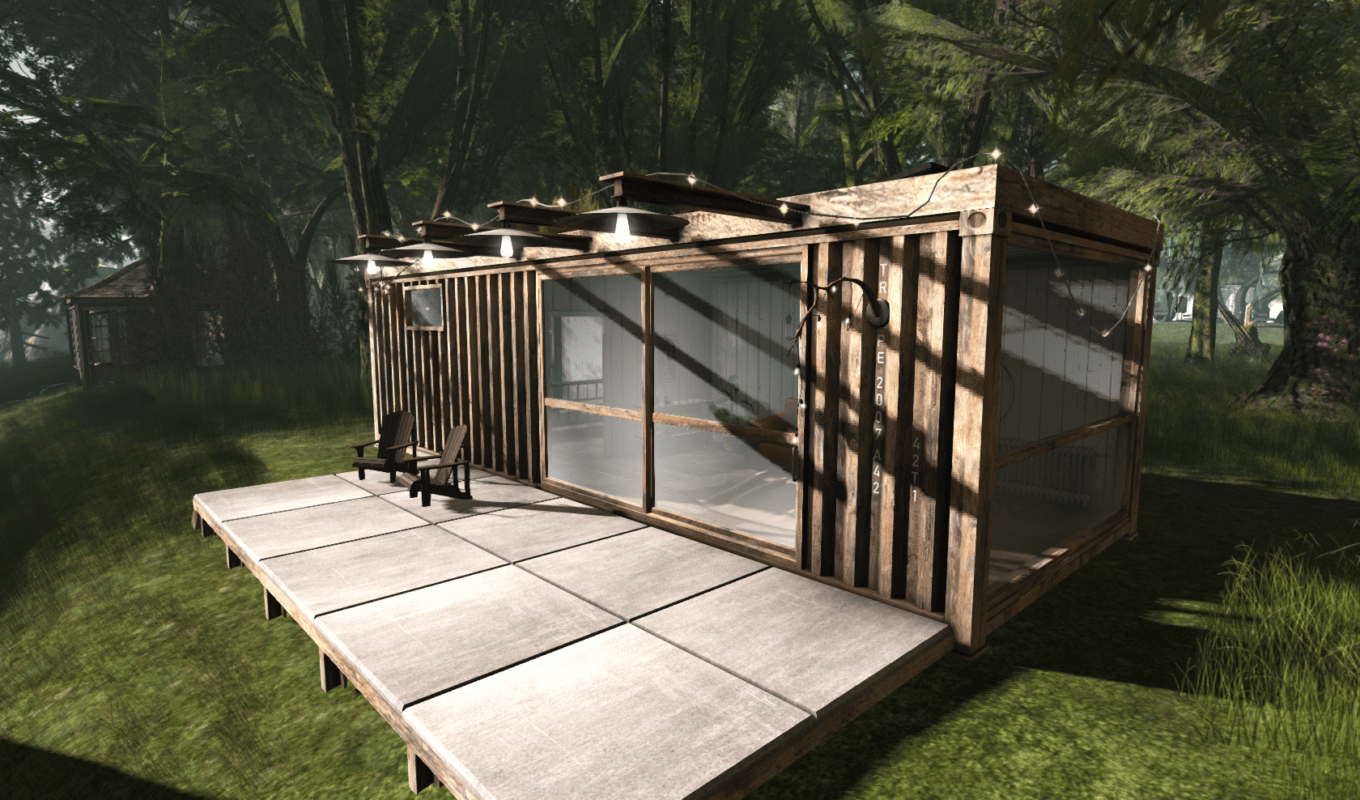
Top 5 Best Off-Grid Solar Systems (Cost, Specs & More) (2024)
Here’s what we’ll cover in this guide to the best off-grid solar systems:
- What are off-grid PV systems and how do they work?
- What are the best equipment brands for off-grid solar arrays?
- What do you need to consider when choosing off-grid photovoltaic equipment?
Each product and or company featured here has been independently selected by the writer. You can learn more about our review methodology here. If you make a purchase using the links included, we may earn commission.
What Are Off-Grid Solar Panel Systems?
A standard solar system — the kind you see on most residential properties — is “grid-tied.” This means they remain connected to the public grid and are capable of a few things:
- They produce energy for your home
- They can send excess energy to the grid to let you take advantage of net metering
- The system allows your home to pull electricity from the electric grid if needed
Through interconnection, grid-tied solar panels allow you to use the sun’s energy whenever possible but always have an electricity supply from your utility company when you need it.
On the other hand, off-grid systems are not tied to the grid. That means you cannot pull energy from a utility company if your energy needs ever outpace your production, and you cannot send excess power to the grid or take advantage of net metering.
Off-grid solar energy systems are a great option for RVs and properties that are too far from the electric grid for a cost-effective tie-in. They’re also helpful for small projects where it’s nice to have electricity, but it may not be worthwhile to connect to the grid. Some examples include sheds, detached garages and other outbuildings.
Off-grid solar systems are usually off-grid out of necessity rather than preference. In most cities, it’s not yet legal to live fully “off-grid.”

Blue Raven Solar
Pros
- Industry-leading in-house financing
- Competitive pricing
- Excellent reputation
Cons
- Doesn't offer solar batteries (coming 2022)

Blue Raven Solar
Pros
- Industry-leading in-house financing
- Competitive pricing
- Excellent reputation
Cons
- Doesn't offer solar batteries (coming 2022)
How Do Off-Grid Solar Systems Work?
Instead of relying on the grid for power at times when the sun is not shining, off-grid solar power systems will use an energy storage system or solar battery to store excess energy produced by the panels.
Acting as a solar generator, that battery bank can then be called on to provide power on cloudy days or at night when the solar energy generation is likely to dip below demand.
When your panels generate more power than you’re using, the excess energy will get routed to the batteries. When solar production drops, your home will pull what it can from your panels and will supplement that with energy stored in the solar generator.
Provided your off-grid photovoltaic (PV) system is sized appropriately for your home or RV, the combination of power from your panels and batteries can provide enough electricity to fully power a home, making it an ideal situation for non-grid-tied applications.
Off-grid systems give you the freedom to electrify just about any home or solar project in a remote location. Plus, installing off-grid systems is often straightforward enough to complete as a DIY home improvement project, so you can save money as opposed to having a professional install a grid-tied system.
Equipment In an Off-Grid Solar System
Off-grid solar systems involve a lot more than an array of solar panels and a battery. The list of equipment you might need includes:
- Photovoltaic panels
- Solar batteries
- A solar charge controller
- A solar inverter
- Mounting equipment
- Wiring
Most importantly, you’ll need PV panels. Your panels are the component that harnesses the energy from the sun. Without them, your home or RV would never have power. You can use just about any panel for your off-grid system, as long as the array is sized properly for your energy demands.
The next most important component in your off-grid setup is the battery. Your solar battery will store the energy your panels produce for later use, which lets you maintain electricity through the night and during cloudy days when production is minimal. Solar storage options range in their capacity, and the size is a crucial factor to get right.
Although not necessary in all off-grid systems, solar storage solutions are a requirement if you need access to electricity at all times of the day.
Some off-grid systems use a charge controller to route the energy collected directly to a device for charging. Charge controllers prevent overcharging when the sunlight on your panels is abundant. They also help avoid more complicated setups that require inverters.
If you’re installing your solar system in an off-grid home where you plan to use electricity as you normally would, you’ll need an inverter. Inverters convert the direct current (DC) energy harnessed from the sun into alternating current (AC) energy. AC power is what you’d use when you turn on a light or plug in an electronic device, so conversion is necessary.
It’s possible to forgo installing an inverter if you have a charge controller or you have batteries with a setup that already utilizes DC electricity. This is more common in recreational vehicles (RVs) than anything else, but some tiny homes also have DC setups.
Finally, you have mounting equipment and wiring. Rooftop solar systems are mounted using roof brackets. Depending on the size and location of your system, though, you might use another mounting option, like ground mounts or pole mounts. Wiring will also be required to connect all of the components mentioned above.
What Are the Top 5 Best Off-Grid Solar Panel Systems?
Below, we’ll include a quick list of our top five best kits for off-grid use, followed by a comparison chart with some important product specifications. In the following sections, we’ll explain why we’ve chosen each of these products and provide more in-depth information for each.
- Renogy 100W Panel Off-Grid Solar Kit
- WindyNation 400W Solar Kit
- Eco-Worthy 1,200W Solar Kit
- Renogy 800W Monocrystalline Solar Panel Premium Kit
- ACOPower 800 Watt Monocrystalline Black RV Solar System
| Best For | Power Output | Price | Price Per Watt | Equipment Included | Warranty | |
| Renogy 100W Kit | Best Overall | 400 watts | $720 | $1.75 | 4 PV panels, charge controller, optional Bluetooth module | 5 years for materials and workmanship |
| WindyNation 400W Complete Kit | Best for Small Applications | 400 watts | $1,900 | $4.75 | 4 PV panels, charge controller, inverter, four batteries, mounting equipment | 5 years for panels, 25 years for efficiency, and 1 year for other components |
| Eco-Worthy 1,200W Kit | Best for Easy Installation | 1,200 watts | $2,750 | $2.29 | 6 PV panels, charge controller, inverter, and 2 batteries | 1 year all-inclusive warranty |
| Renogy 800W Monocrystalline Solar Premium Kit | Best Warranty Coverage | 800 watts | $1,600 | $2.00 | 8 PV panels, charge controller, Bluetooth module, mounting equipment | 10 years for equipment and workmanship, 25 years for efficiency |
| ACOPower 800 Watt Monocrystalline Black RV Solar System | Best for Back-up Energy | 800 watts | $4,800 | $6.00 | 8 PV panels, charge controller, inverter, 4 200 amp-hour 12 volt batteries | 2 years for manufacturer defects only |
Renogy 100W Panel Off-Grid Solar Kit — Best Overall
The Renogy off-grid solar kit is our favorite overall, and it’s the one we feel most comfortable recommending. It includes four 100-watt solar panels for a total output of 400 watts. This means it’s ideal for smaller applications, although it can be expanded with additional panels for more power.
The kit also includes a charge controller for easy connection of devices or appliances. The charge controller is a Pulse Width Modulation (PWM) controller, which isn’t as efficient as a Maximum Power Point Tracking (MPPT) controller. Still, it’s a great option for quickly connecting devices to your panels.
The Renogy kit can be equipped with a Bluetooth module that lets you connect to the system wirelessly to check performance. This is an outstanding option that most other kits don’t include. It’s handy for setting up your batteries and keeping an eye on production and storage to ensure you don’t experience a blackout.
Unfortunately, this system doesn’t include batteries or an inverter, so if you’re looking to go fully off-grid with reliable power, you’ll need to buy these separately. Renogy does sell compatible 100 amp-hour, deep-cycle batteries for around $300 each, so you can easily add those onto your system while you’re collecting your equipment.
Perhaps most importantly, Renogy is a trusted name in do-it-yourself solar equipment. Not only do you get high-quality materials and durable components, but you also get the company’s 5-year warranty for the materials and workmanship.
Renogy’s equipment is also waterproof. The components have waterproof ratings of IP65 and IP67, so you can install this system in just about any location with confidence.
Many Renogy products are available from sites like Amazon and Home Depot, so you should have no issue getting your hands on the equipment.
Pros
- High-quality, durable components
- Includes Bluetooth module for wireless solar monitoring
- Trusted and reliable brand name
- Great value for the money
- Relatively affordable
- Can be expanded to provide more power
Cons
- Doesn’t include batteries or an inverter
- Not ideal for larger applications
- Poor customer service
| Our Rating | 4.8 |
| Best For | Best Overall |
| Watts | 400 watts, but can be expanded |
| Equipment Included | 4x 100W PV panels, charge controller, Bluetooth module for wireless solar monitoring |
| Price | $700 |
| Warranty Coverage | 5 years for equipment and workmanship |
WindyNation 400W Solar Kit — Best for Small Applications
The 400W solar kit from WindyNation is our top pick for a complete solar setup for smaller solar projects. It’s about twice the price of the Renogy system, but it includes more equipment that allows you to go fully off-grid.
The kit comes with four 100W panels, a charge controller, an inverter, four 100 amp-hour batteries, wiring to hook up your system, and brackets for an easy solar installation.
This is an ideal starter kit if you’re looking to convert a small cabin, RV or other remote home to off-grid renewable energy. You’ll have everything you need to produce and store electricity through the night and through cloudy days if you buy the complete kit.
You can also buy a kit without an inverter for about $600 less if you don’t need to power a home or need access to AC current. It still comes with a PWM charge controller to utilize the energy you collect.
WindyNation is also a reliable solar manufacturer, and it backs this system with a 5-year warranty for the panels, a 1-year warranty for all other components, including the batteries and a 25-year warranty for power production. Its products are also available on Amazon and from home improvement stores like Home Depot, so they’re very accessible.
Pros
- Excellent warranty coverage for panels and efficiency
- Includes batteries and a controller
- High-quality materials will last for years
- Available for less money without inverter
- Relatively straightforward to set up
Cons
- More expensive than competitors
- Warranty isn’t the best for equipment besides solar panels
| Our Rating | 4.7 |
| Best For | Small Applications |
| Watts | 400 watts, but can be expanded |
| Equipment Included | 4x 100W PV panels, 4x 100 amp-hour deep cycle batteries, inverter, controller, mounting equipment |
| Price | $1,900 (or around $1,300 for smaller system) |
| Warranty Coverage | 5 years for panels, 1 year for other equipment, 25 years for panel efficiency |
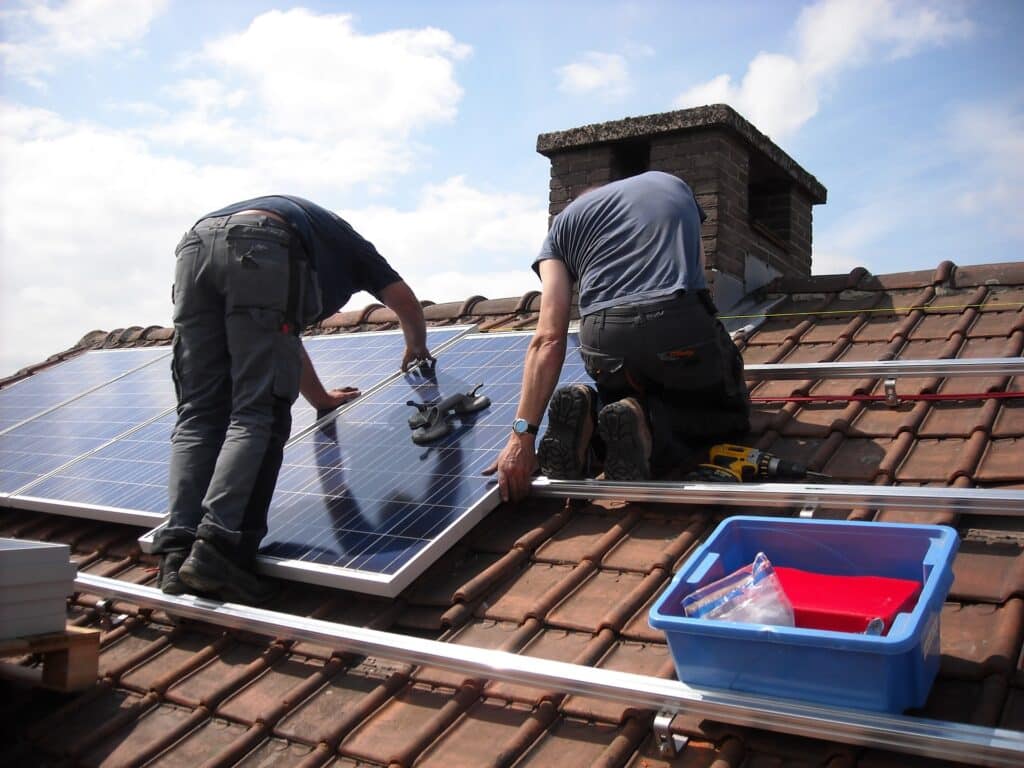
Eco-Worthy 1,200W Solar Power Kit — Best for Easy Installation
If you’re a little intimidated by the process of connecting all of your solar system components yourself and are looking for a kit that is DIY-friendly, even for beginners, we’d recommend the Eco-Worthy 1,200W kit.
This includes six 200W PV panels to produce a massive 1,200 watts of power, making it suitable for most small off-grid houses, sheds, detached garages, or other structures that aren’t connected to the grid.
It also includes a pure sine wave inverter (PSW inverter) and two 100 amp-hour batteries to provide power even when the sun isn’t shining on your panels. Finally, you get a Bluetooth module to monitor your production and energy storage, which is ideal for keeping an eye on your production and energy stores.
Our favorite thing about this kit is that the instructions are simple to follow, and the company — and third-party companies — have a variety of instructional videos you can reference for tips on a straightforward and stress-free installation.
Even the printed instructions include wiring diagrams and installation instructions that are easy to follow, and the company has 24/7 customer service lines open in case you run into any issues or have questions.
If you’re looking for the maximum amount of energy for your solar project, you can also invest in the solar tracking kit from Eco-Worthy. This mounting system tilts and pivots your panels to ensure the optimal angle for energy collection.
With panels that boast a 21% efficiency rating, the tracker kit can help make this system suitable for larger projects as well.
Pros
- Simple and well-explained installation instructions
- Video installation guides available
- Complete kit includes batteries and inverter/charger
- Great for small and medium-sized solar projects
- Relatively affordable on a price-per-watt basis
- Expandable with compatible accessories from the same company
Cons
- Two 10 amp-hour batteries may not be sufficient for some applications
- Expensive overall, despite being a good deal
- The warranty coverage is severely lacking
| Our Rating | 4.6 |
| Best For | Easy Installation |
| Watts | 1,200 |
| Equipment Included | 6x 200W PV panels, 3,000W inverter, 2x 10 amp-hour batteries, mounting equipment |
| Price | $2,900 |
| Warranty Coverage | 1-year warranty for all equipment |
Renogy 800W Monocrystalline Solar Panel Premium Kit
Renogy makes our list again with its 800 watt solar premium kit. This is a more comprehensive kit than our top pick, but it comes at a higher overall price and a higher cost per watt.
The kit includes eight 100 watt panels for a total output of 800 watts. Like the other Renogy system, this one includes high-efficiency panels that can help you take advantage of solar power even in low-sun conditions.
It also comes with an MPPT charge controller to maximize energy conversion and a Bluetooth module that allows you to monitor your system in real-time. This option is great for keeping track of solar production and monitoring how much energy you have stored if you couple the kit with batteries.
Unfortunately, as is the case with all Renogy kits, batteries aren’t included in this kit. The charge controller is fully compatible with multiple types of batteries, though, so you should have no issues coupling your kit with a battery storage solution. The controller also has four charging modes to maximize battery efficiency and extend battery life.
The biggest draw for this system, in our opinion, is the warranty coverage. Renogy covers the equipment and workmanship for 10 years, which is outstanding for a do-it-yourself solar kit. It also guarantees that the system will stay at or above 80% efficiency for at least 25 years. This helps ensure you enjoy maximum production for as long as possible.
Pros
- Outstanding and lengthy warranty coverage
- Includes an MPPT controller with multiple charging modes
- Includes a Bluetooth module for live-time system monitoring
- Comes at a relatively low per-watt price
Cons
- Two 10 amp-hour batteries may not be sufficient for some applications
- Expensive overall, despite being a great deal
- The warranty coverage is severely lacking
| Our Rating | 4.6 |
| Best For | Warranty Coverage |
| Watts | 800 |
| Equipment Included | 8 PV panels, MPPT charge controller, Bluetooth module, mounting equipment |
| Price | $1,600 |
| Warranty Coverage | 10 years for equipment and workmanship, 25 years for efficiency |
ACOPower 800 Watt Monocrystalline Black RV Solar System — Best for Backup Power
This is a fully functional off-grid kit from ACOPower, a trusted name in do-it-yourself solar equipment. It provides a massive 800 watts via four 200-watt solar modules. This kit is designed for use on an RV, but it can be adapted to suit tiny homes, cabins or just about any off-grid abode where you need constant access to electricity.
We’ve rated this as the best system for backup power because it includes four 200 amp-hour 12-volt batteries, the largest battery capacity of any of the systems on our list.
This makes it the ideal system for locations that receive ample sunshine punctuated by inclement weather. The 800 amp-hours of energy should be plenty to maintain electricity in most off-grid conditions.
The kit also includes a charge controller for easy access to your live-time energy production, as well as an inverter to allow for easy conversion of your DC energy from the sun into AC electricity for typical power sources, like outlets. The charge controller is an MPPT for maximum energy conversion.
Unfortunately, the warranty for this system is only good for two years. It’s a limited warranty as well, so it only covers issues stemming from manufacturer defects.
This is an expensive kit, but it’s well worth the money if you need consistent and reliable access to solar electricity.
Pros
- Includes a massive 12-volt battery bank for ample energy storage
- Provides enough power for most small and medium applications
- Includes everything you need to go off-grid for extended periods
- Relatively straightforward instructions and installation process
Cons
- The warranty is lacking compared to competitors
- Expensive overall
- Costly on a per-watt basis
| Our Rating | 4.1 |
| Best For | Backup Power |
| Watts | 800 |
| Equipment Included | 8x 200 watt PV panels, charge controller, inverter, 4x 200 amp-hour batteries, mounting equipment |
| Price | $4,800 |
| Warranty Coverage | 2 years for manufacturer defects only |
What Should You Consider When Buying An Off-Grid Solar Panel System?
Choosing an off-grid system is an intimidating process, especially if it’s your first experience installing a solar kit. There are quite a few things you should keep in mind as you go through the different options. To help make the process a bit smoother, we’ll discuss some of the most important factors to consider below.
Energy Needs
The first thing you should consider when choosing an off-grid PV system is the size of your project. All solar panel systems should be sized according to the amount of energy you consume, so a quick calculation can help determine what size will meet your demands.
You can start by figuring out how much energy your off-grid application consumes. This can be a challenge, but you can get the expected loads of each electrical device you plan to run on energy from the sun and the amount of time you’ll be using it each day.
This can give you a baseline for your expected energy consumption. Sizing up from this by around 25% can help offset the days that your system won’t produce at 100% capacity, such as cloudy days or winter months.
Take a look at the table below to learn the average consumption rates for different household appliances and electronics.
| Appliance/Household Item | Rated Watts Required for Continuous Power |
| Phone Charger | 10 watts |
| Alarm Clock | 10 watts |
| Energy-Efficient Light Bulb | 18 watts |
| Ceiling Fan | 60 watts |
| Standard Light Bulb (60W) | 60 watts |
| DVD Player | 100 watts |
| Mini-Fridge | 100 watts |
| Home Speaker System | 100 watts |
| Box Fan or Floor Fan | 100 watts |
| Hair Straightener | 120 watts |
| Small Laptop Power Supply (like Chromebook) | 125 watts |
| Gaming Console | 180 watts |
| Vacuum Cleaner | 200 watts |
| Rice Cooker | 200 watts |
| Heated Blanket | 200 watts |
| Up to 56” LCD TV | 225 watts |
| Standard Desktop PC (Non-Gaming) | 240 watts |
| Dehumidifier (Standalone) | 250 watts |
| Whole-House Exhaust Fan | 350 watts |
| Blender | 360 watts |
| Central AC (Fan Only) | 370 watts |
| Evaporative Cooler | 400 watts |
| Keurig Coffee Maker | 400 watts |
| Desktop PC and Monitor | 400 watts |
| Washing Machine | 500 watts |
| Refrigerator | 725 watts |
| Space Heater | 750 watts |
| Toaster | 1,000 watts |
| Microwave | 1,000 watts |
| Dishwasher | 1,500 watts |
| Clothes Dryer | 3,500 watts |
| Water Heater | 5,000 watts |
If all you need to power in your off-grid home is a mini-fridge, laptop and two light bulbs, then you’ll only need to supply 345 watts of continuous power (100 watts + 125 watts + 2x 60 watts). The Renogy 100W panel kit would do the trick for a load that small.
One additional consideration to make is the efficiency rating of your panels. A higher rating will usually lead to greater rates of energy production. Monocrystalline panels are more efficient than polycrystalline and thin-film panels, although they’re more costly. You can always check the panel’s specifications for a specific efficiency rating.
Batteries and Storage Capacity
The next thing you’ll want to consider is whether or not you need batteries for your system. Some off-grid systems can function with just solar modules if you only need access to power during daylight hours. For other applications, you’ll want electricity at all times, even on cloudy days when solar production is low or at night when it’s non-existent.
If you do decide you want batteries, you’ll need to do another calculation to figure out how much energy you need to store to meet your needs. Determining how much storage you need to cover your consumption in watts or kilowatts is tough, but you can assume that most 100 amp-hour batteries provide approximately 1,200 watt-hours (or 1.2 kWh) of stored energy. This could power a 100-watt appliance for 12 hours.
From there, you can decide which of your devices you’ll want to be able to run on stored energy and size your batteries accordingly. As is the case with panels, it’s always wise to size up a bit for the best results.
One additional consideration you’ll need to make is what kind of battery you want. The four primary types are below:
- Lead acid battery: The most common and often considered the most reliable
- Lithium battery: Lithium-ion batteries are best for storing larger amounts of energy
- Nickel-cadmium battery: Nickel-cadmium (Ni-Cd) batteries have some of the longest battery life available
- Flow battery: flow batteries allow for a total discharge, making them a popular option for totally off-grid solar applications

Additional Equipment Included
Solar panels purchased for off-grid systems typically require additional equipment. Most include battery chargers in the form of charge controllers, which help prevent battery overcharging and let you connect devices directly to your panels for power. Some also come with batteries and inverters, and others include all of this plus mounting brackets and wiring for an all-in-one off-grid setup.
The charger you get with your system can determine your overall system efficiency. The two most common options are PWM and MPPT solar charge controllers. MPPT controllers provide the maximum efficiency possible, so they’re probably the best option if you’re looking to take full advantage of the available sunlight.
Most DIY off-grid systems also include wiring and connectors to connect all of the components and mounting equipment to install your panels safely.
You might need to consider purchasing longer cables, depending on where you’re installing the components in relation to the others — like if you need batteries inside, but the ground mounts need to be placed far away for maximum sun exposure.
Additionally, DIY solar kits can come with a variety of mounting equipment, including Z brackets for roof-mounted solar, pole mounts and ground mounts. Consider where you want to install your panels before deciding which mounting option — and solar kit — is right for you.
You should decide what kind of system you’re looking for and whether you need the add-ons above and beyond your panels and charge controller. Keep in mind that things like inverters and batteries — and even additional panels and upgraded connectors — can all be added to your system at a later date if you need to upgrade or expand your setup.
Warranty Coverage
Finally, you’ll want to think about the warranty coverage included with your system. Most DIY solar systems have some kind of warranty to protect your investment for at least a few years. With off-grid system prices sometimes topping $5,000, warranty coverage can provide much-needed peace of mind that your equipment will work as intended for years after the installation.
Most solar kit warranties cover the equipment from manufacturer defects, the performance of the panels, or a combination of the two. Of course, longer and more comprehensive warranties are always better, but you’ll have to decide if paying more for a system that comes with superior warranty protection is worth it for you.
Pros and Cons of Off-Grid Solar Panel Systems
Converting your off-grid house to solar is usually beneficial, but it’s certainly not right for everyone. In the table below, we’ll compare and contrast off-grid and grid-connected solar power systems. We’ll then dive into the benefits of an off-grid system in the following sections.
| Off-Grid System | Grid-Tied System | |
| Provides clean energy for your home | Yes | Yes |
| Suitable for remote locations | Yes | No |
| Can be coupled with a battery | Yes | Yes |
| Requires batteries | For full-time access to electricity | No |
| Susceptible to power losses | No | Yes |
| Suitable for DIY installation | Yes | No |
| Significant maintenance required | No | No |
Provides Power in Remote Locations
Off-grid PV systems are most popular in remote locations, like rural areas, where connecting to the grid either isn’t possible or is prohibitively expensive. Off-grid systems let you harness the power of the sun, use it to provide electricity for your home and charge backup batteries, if applicable.
Appropriately sized off-grid systems can power homes that normally would not have access to electricity. Larger systems can provide enough power and backup energy to run an entire cabin or another off-grid house indefinitely.
Helps Avoid Power Outages
Off-grid systems can be a great option even if you don’t live in a rural area. If you have access to electricity via the grid, you’re always susceptible to blackouts. Unfortunately, blackouts occur most often during severe weather and other emergency situations, which is when having power is of the utmost importance.
While grid-reliant systems will go down during an outage, off-grid systems can continue to function without issue. Provided the sun is shining, a standalone solar system will continue to produce and store energy even if the surrounding properties have lost power.
If you want to avoid outages, just be sure to include all of the below equipment — at a minimum — in your solar setup:
- Panels for energy generation
- Batteries for energy storage
- An inverter to convert DC power to usable AC power
Reduces Energy Costs
Converting to solar also means you’ll be able to avoid paying retail prices for electricity. With an average annual consumption of 893 kWh and an average retail rate of 13.15 cents per kWh, an off-grid system will save the average homeowner just over $1,400 each year.1
Installing an off-grid system can be expensive, but the savings speak for themselves. In most cases, they will pay for themselves in just a few years. If your home is in an isolated area, the panels may pay for themselves immediately if you consider the potential cost of running dedicated electrical wires to your home from the grid.
Plus, many homeowners looking to reduce energy costs and electricity bills also convert heating systems that use oil or natural gas to electric options to run off of the energy from the sun. This can bring down utility bills even further.
Beneficial to the Environment
Of course, converting to solar is also a great way to reduce your carbon footprint and your negative impact on the environment. Whether your current setup uses natural gas, propane, oil or wood — for heating your home via a wood-burning stove — converting to solar means using clean energy and reducing your emissions.
The average solar system reduces CO2 emissions of a single home by approximately 6.16 tons every year.2 Effectively, installing an off-grid system will help limit global warming and pollution on a rather grand scale.
Are Off-Grid Solar Panel Systems Worth It?
Off-grid PV systems are a great option for some people, but it depends on your individual situation and your needs.
If you have a home in a remote location where it’s not possible or not economically feasible to connect it to the grid, then an off-grid array could be the ideal solution. It can provide you with clean energy at all times, provided you size your system appropriately and install batteries.
An off-grid system can also be a great option for small applications, where it might be possible to connect to the grid, but it isn’t worthwhile. A good example would be an outbuilding, like a shed or detached garage, where you don’t need electricity, but it’s nice to have.
If your home is situated close enough to connect to the grid, or if you need to maintain power at all times, a grid-connected solar array might be a better option. This allows you to utilize renewable energy but also fall back on electricity from your utility company if solar production drops for an extended period.
Ultimately, you’ll need to decide for yourself if an off-grid PV system is the right solution for you. For help with your decision, we recommend reaching out to one of our vetted partners who can provide you a quote for your specific setup.
Comparing authorized solar partners
-
- Industry-leading in-house financing
- Competitive pricing
- Excellent reputation
- Doesn't offer solar batteries (coming 2022)
A+Best Solar Financing2014Trina Solar, Canadian Solar, SolarEdge, Silfab, SunPower25-year manufacturer warranty; 10-year workmanship warranty, 2-year production guarantee
Having trouble deciding? Click below and use our process to receive multiple quotes instead:

 233k
233k  41k
41k  Subscribe
Subscribe 




